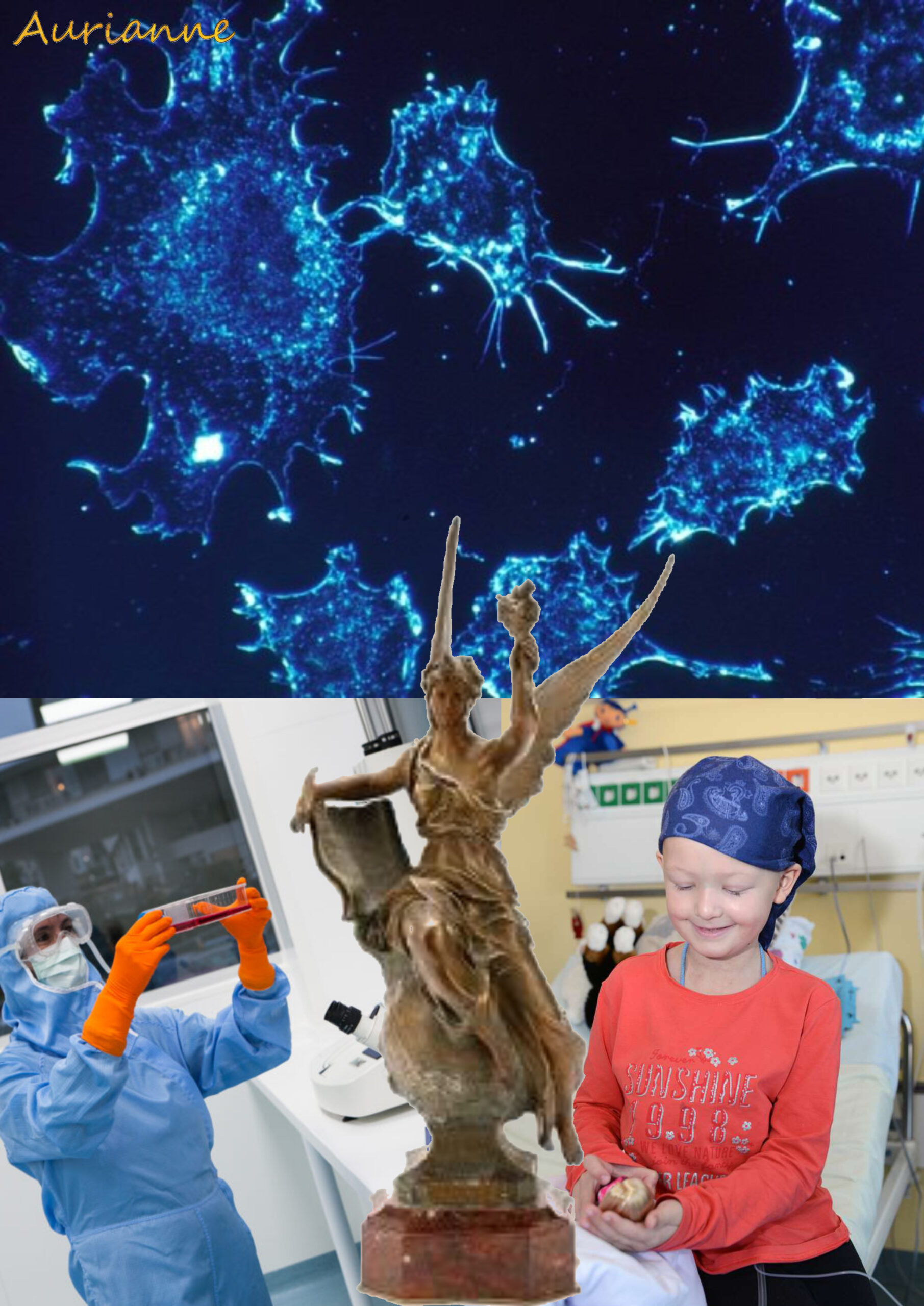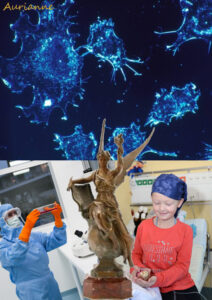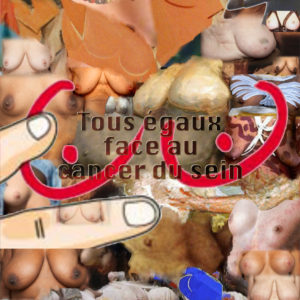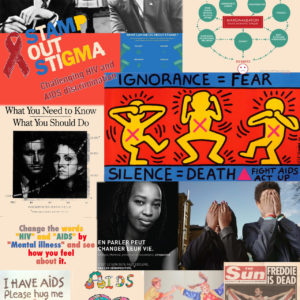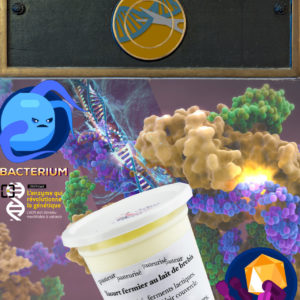The cells of the human body have a life span of 2 weeks to 15 years. To ensure the continuity of the human body, they duplicate and then die. This is written into the DNA. Hormones trigger DNA functions. There are a hundred thousand billion cells in the human body. Every day, 50 billion cells must clone themselves with their DNA and die.
Sometimes errors occur during DNA duplication. Most of the time, the new cell will have a blueprint foreign to the human body and the immune system will destroy it. The DNA may have an error, but the hormones don’t activate it; there are no consequences. The DNA may be incorrectly transcribed, the cell will malfunction, but it is recognized as part of the human body and reproduces with its defects. These errors occur 45 million times a day. That’s old age.
Once in a while, a mistake is made and the cell forgets to die. It becomes immortal. It clones itself, and instead of having one new cell and one that dies, there are two. Then four, then sixteen, and so on. This is cancer. Cells malfunction and increase in number instead of remaining constant.
Cancer is dangerous because these cells upset the balance of the human body: too many hormones, too many bones, too much stomach, and so on. When they take up too much space, we call it a tumor. The distribution of cancers in the population is linear, typical of a statistical distribution, i.e. cancer is a function of chance. Game theory says that if you roll a dice enough times, you’ll end up with a given number. If there are 45 million mistakes a day, the chances of these mistakes becoming cancer increase with the number of repetitions, and therefore with age. But they can also affect a child or a baby; it’s rarer, but it does happen. Once you reach a certain age, it’s almost certain, and it can appear in any cell of the body. The first factor that could lead to cancer one day is statistical.
Age and Cancer Risk – NIH: https://www.cancer.gov/about-cancer/causes-prevention/risk/age
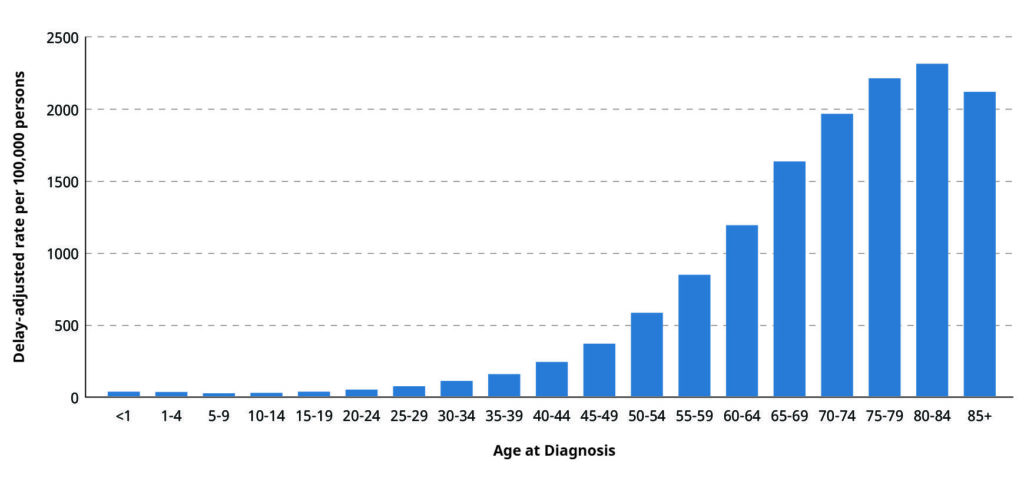
Deviations from this statistical curve range from 5 to 10%. Lifestyle has little impact. Drinking alcohol, sun exposure and smoking increase the chances of getting cancer, but not by much.
Most Cancer Is Beyond Your Control, Breakthrough Study Finds – Time: https://time.com/3650194/most-cancer-is-beyond-your-control-breakthrough-study-finds/
What causes a cell to become cancerous is first and foremost DNA transmission errors, 99% of which are due to radiation. The sun bombards us with radioactivity every day. Soil, water and therefore food contain radioactive elements.
Cells are specialized. If the erroneous transmission occurs, but the cell does not use this function, this part of the DNA will not cause cancer.
Hormones are the subsequent cause of a cell becoming cancerous. When hormones don’t work properly, they ask the cell to use the DNA function that doesn’t correspond to it. There are external agents that behave like hormones. These are known as endocrine disruptors. Everything derived from fossil fuels (plastics, oil, uranium, etc.) comes from living matter containing hormones. These hormones have the ability to behave like human hormones. One day, one of these hormones touches a cell and activates its DNA. This increases the risk of cancer by a factor of 5 to 10%.
Evaluating intrinsic and non-intrinsic cancer risk factors – nature communications: https://www.nature.com/articles/s41467-018-05467-z
Since 1990, the number of cancers diagnosed worldwide has risen by 75%. A billion Chinese and a billion Indians have beaten infectious diseases, so they live longer and die of cancer more often. The chances of developing cancer under the age of 50 have fallen.
Change in three measures of cancer mortality, World, 1990
to 2019 – Our world in data: https://ourworldindata.org/grapher/cancer-deaths-rate-and-age-standardized-rate-index
There are some endocrine disruptors that have not been used since the 90s: PCBs and DDTs. They polluted the whole world. Most of the endocrine disruptors we receive come from the air, from atmospheric pollution. For example, someone living in Beijing is just as likely to get cancer as someone who smokes 25 cigarettes a day.
If you live in a big city you already smoke every day– World economic forum: https://www.weforum.org/agenda/2018/05/if-you-live-in-a-big-city-you-already-smoke-every-day/
We can remove the endocrine disruptors used in factories for the profits of a few: pesticides, petroleum, plastic, the use of fire etc. This would reduce the risk of cancer somewhat, as it would reduce DNA activation in poorly transcribed cells.
What really makes a difference is that medicine is able to make people with cancer live longer. For breast cancer, for example, there was a 45% chance of survival over 10 years in 1971. Today, it has a 78% chance of being alive in 10 years.
Living With and Beyond Cancer: New Challenges: Research Gate: https://www.researchgate.net/figure/Ten-year-relative-survival-adults-15-99-years-selected-cancers-England-and_fig2_221923132

It’s important that there should be real public research into cancer. Survival is a direct result of medicine. We can live much better with cancer.
Dietary supplements, antioxidants and spa treatments have no effect on cancer, but they do capture a huge amount of money that is not invested in science.
Some scientists suggest renaming cancers to avoid using names of areas of the body in which it has been detected, whereas cancer spreads throughout the body. Instead, they recommend using the nature of the cancer and the way it spreads.
We’re naming cancers all wrong, oncology leader says – Stat News: https://www.statnews.com/2024/01/31/oncology-name-cancer-by-genetics-not-organs-expert-says/
Updating the Definition of Cancer – NIH: https://www.ncbi.nlm.nih.gov/pmc/articles/PMC10618731/
You can’t fight cancer. You can’t blame the person for getting cancer. On the other hand, you have to accept medical care. Infectious diseases have been beaten with antibiotics, not by making victims feel guilty.
Let King Charles’s illness finally change how we speak about cancer: it’s not about ‘winning’ or ‘losing’ a ‘war’ – The Guardian: https://www.theguardian.com/commentisfree/2024/feb/16/king-charles-speak-cancer-winning-losing-war-bowel-language
CAR-T cell therapy is a new invention. Emilie Whitehead was the first person to be treated with this therapy. At the age of 7 in 2012, when she was dying, her doctors used the new CRISPR CAS-9 technique to modify her immune cells to fight her own cancer. Ten years on, Emilie is still alive and enjoying a normal life.
he Emperor of All Maladies: A Biography of Cancer – Siddhartha Mukherjee: https://www.goodreads.com/book/show/7170627-the-emperor-of-all-maladies
The Song of the Cell: An Exploration of Medicine and the New Human – Siddhartha Mukherjee: https://www.goodreads.com/book/show/60321392-the-song-of-the-cell
Papillomavirus : ces hommes qui parlent de leur cancer HPV – Ouest France: https://www.ouest-france.fr/sante/cancer/ces-hommes-qui-parlent-de-leur-cancer-hpv-c61e1a70-dafc-11ee-97c7-e4301a9e69a2
One in three men worldwide are infected with genital human papillomavirus – WHO: https://www.who.int/news/item/01-09-2023-one-in-three-men-worldwide-are-infected-with-genital-human-papillomavirus
Le vaccin contre le papillomavirus est aussi important pour les garçons, voici pourquoi – Huffington Post: https://www.huffingtonpost.fr/life/article/le-vaccin-contre-le-papillomavirus-est-aussi-important-pour-les-garcons-voici-pourquoi-clx2_222549.html

